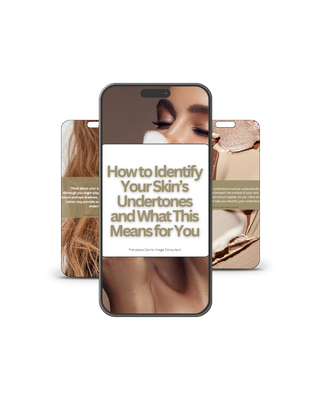Seasonal Colour Analysis: Discover Your Colour Season
Understanding your colour season helps you identify which tones bring out your best features, skin, hair, and eyes, and how to build a harmonised wardrobe. This guide walks you through the steps to figure out which of the twelve colour seasons is yours, based on three main characteristics.
What to Look For
To find out your colour season, you need to examine your natural colouring through three dimensions:

-
Hue (Warm vs Cool vs Neutral)
This dimension shows the undertone of your colours:-
Warm = more yellow/golden hues
-
Cool = more blue tones
-
Neutral = somewhere in between
You’ll check undertones in your skin, plus clues in your hair and eyes. One simple test: see if you look better in gold (warm) or silver (cool). If neither dominates, you might be neutral.
-

-
Value & Contrast (Light ↔ Dark)
This is about how light or dark your overall features are, and how much contrast there is among them (skin vs hair vs eyes).-
Someone with lighter skin, hair and eyes has a “light” value.
-
Someone with dark hair and lighter skin has high contrast.
-
If features are all somewhere between light and dark, that’s “medium.”
-

-
Chroma (Muted vs Bright / Pure vs Soft)
Chroma refers to how intense or subdued your natural colouring is:-
Bright / clear colours = high chroma
-
Muted / soft / greyed tones = low chroma
-
Someone in between has medium saturation.

Putting It All Together
Each person’s colouring can be described by where they fall on these three scales. One of those dimensions will stand out as primary (the most defining), another as secondary, and the third will be less pronounced. These combinations correspond with one of the twelve colour seasons.
-
If your primary trait is warm, then your secondary might be either bright or muted, leading you to seasons like True Spring or True Autumn.
-
If your primary is cool, with secondary bright or muted, you get True Winter or True Summer.
-
Similarly, “Light,” “Dark,” “Bright,” and “Muted” can be primaries too, paired with warm or cool secondary traits, giving you others like Light Spring, Soft Summer, Dark Autumn, Bright Winter, etc.
Here are some examples of how those seasons differ:
-
True Spring (warm + bright): Radiant, vibrant warm tones suit you. Gold looks good.
-
True Autumn (warm + muted): Rich earthy tones, softer, deeper colours.
-
True Winter (cool + bright): Bright, icy or strong cool tones, dramatic contrast.
-
True Summer (cool + muted): Softer, dusty cool colours, romantic and faded rather than sharp.
-
And similarly for the other hybrid seasons (Light, Dark, Bright, Muted paired with warm or cool).
Why It Matters
Knowing your colour season helps you:
-
Choose clothing and accessories that make your complexion glow rather than wash you out.
-
Select makeup shades more easily.
-
Build a wardrobe where pieces harmonise with each other and with you.
Book your colour analysis today to learn your sub season and best colours! -
-

